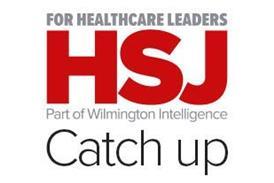We live in political times. That much is clear from the first HSJ100, the expanded version of the HSJ50 which, for the past four years, has plotted the most influential people in health.
In 2009 there were five political figures in the top 50, this year there are 10. For the first time the health secretary ranks number one and the entire ministerial team are among the top 50.
They - and the other five political figures - owe their rankings to the radical and controversial nature of the government’s reform process, whose future will be determined during what might become a fierce parliamentary battle during the first half of 2011.
The greater political emphasis is just one manifestation of the overriding theme of this year’s list: that of change. Of the top 50 influencers, 26 are new entries, including eight of the top 20.
GP commissioning is the government’s flagship policy and, as a result, there are nine GPs in the 100, including numbers 3, 8 and 11. Indeed, as a sign of the changing power relations within the health sector, 25 of the list have clinical backgrounds, 22 of them medical.
But the influence of the managerial community remains strong. Just under half of the 100 hold management positions at local and national level. This is just as well as the other main narrative of 2011 will be the success of NHS chief executive Sir David Nicholson’s “national management system” in overseeing the efficiency savings of “up to £20bn” that chancellor George Osborne has now made a government commitment.
Commissioning lead Dame Barbara Hakin (up 39 places) and new entries Ian Dalton (12), Sir Neil McKay (18) and Jim Easton (39) emerge alongside Sir David, David Flory and Mike Farrar as among the national management elite.
With so much action on the national stage, it is perhaps not surprising that there are only 12 NHS chief executives in the top 100, and just two in the top 50, compared with six last year.
Topics
HSJ100: Politicians and medics surge to power in the new world order
- 1
 Currently reading
Currently readingHSJ100: Politicians and medics surge to power in the new world order
- 2
- 3
- 4
- 5
- 6
- 7
- 8
- 9
- 10
- 11
- 12
- 13
- 14
- 15
- 16
- 17
- 18
- 19







































3 Readers' comments